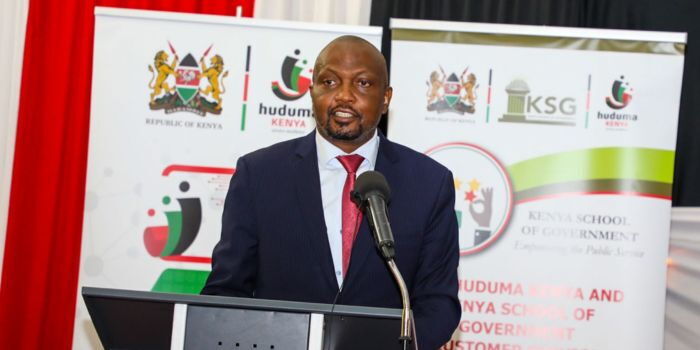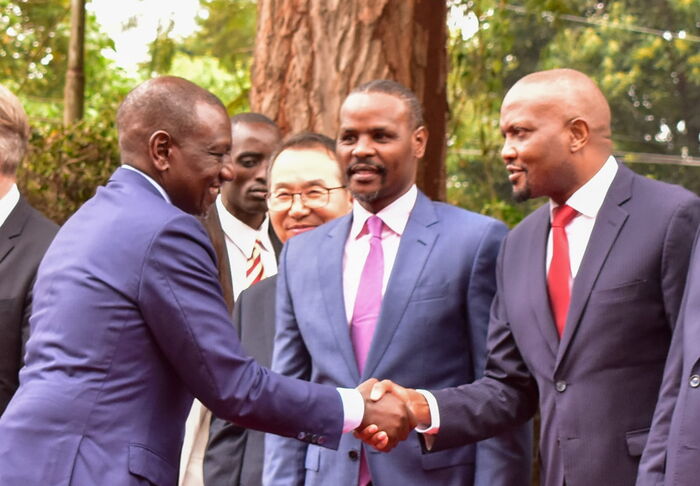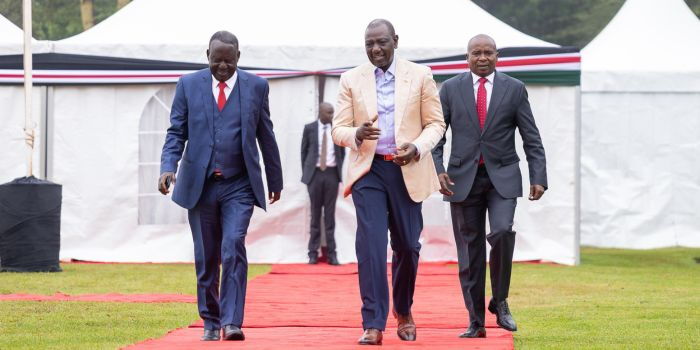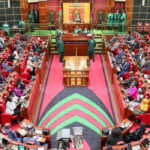Kenya’s political stage is heating up once again after former Cabinet Secretary and close ally of President William Ruto, Moses Kuria, launched a strong attack on both UDA and ODM.
Speaking on Tuesday morning, Kuria accused the two dominant political parties of failing Kenyans by dragging their feet on the implementation of the National Dialogue Committee (NADCO) report.
According to him, NADCO was designed to be a turning point for Kenya’s politics. Instead, it is slowly turning into another failed promise, just like the Building Bridges Initiative (BBI).
Kuria said he had hoped the NADCO report would lead to a referendum in 2027, where Kenyans could vote on long-lasting reforms. But from the way things are unfolding, he now sees that dream slipping away.
📰 Also Read This:
“I was clinging to the hope that the NADCO process would culminate in a referendum, most likely as the 7th ballot during the 2027 general elections,” Kuria explained.
He compared Kenya’s politics to a patient suffering from a deadly disease but being given only painkillers instead of treatment.
“As I have said before, we have a malignant tumour in our body politic which we keep trying to heal through anaesthesia such as handshake, broad-based government etc, ad infinitum, ad nauseam,” Kuria said in a sharp tone.
The former CS insisted that unless NADCO is implemented fully, it will collapse the same way BBI collapsed, leaving Kenyans frustrated and betrayed once again.
Kuria also blamed UDA and ODM leaders for sidelining smaller parties, both within Kenya Kwanza and Azimio.
He expressed disappointment over Monday’s joint parliamentary meeting at State House, Nairobi, which was attended by President William Ruto, Deputy President Kithure Kindiki, and Raila Odinga.
Instead of building inclusivity, Kuria said the meeting was reduced to a political marriage between ODM and UDA.
“Sadly, what I saw yesterday was an otherwise promising national moment being reduced to a dowry paid by UDA to ODM. Not even other constituent parties in both Azimio and Kenya Kwanza were consulted,” Kuria lamented.
His harsh words highlight growing cracks in the government and opposition dialogue process, even as both Ruto and Raila try to show unity.
The Monday meeting was expected to bring together leaders from different parties under one vision. Instead, it exposed new divisions, with many parties feeling excluded.
Kuria’s statements have since sparked heated debate online. Supporters of UDA accuse him of bitterness, while some Azimio supporters say his concerns reflect the truth, that Kenyan politics remains dominated by only two “big men” parties.
The NADCO process was meant to address deep-rooted challenges in Kenya such as election reforms, inclusivity, and political stability. But without quick action, Kuria fears it will become another wasted opportunity.
Analysts say Kuria’s voice matters because he has been inside government and understands the weaknesses of the system. His criticism puts pressure on both Ruto and Raila to prove that NADCO will not die like BBI.
As 2027 approaches, Kenyans are watching closely to see whether NADCO reforms will appear on the ballot, or whether, once again, promises of change will be postponed.
For now, Moses Kuria’s fiery remarks have reignited debate about Kenya’s future, the role of dialogue, and whether true political reform is possible under the current leadership.










